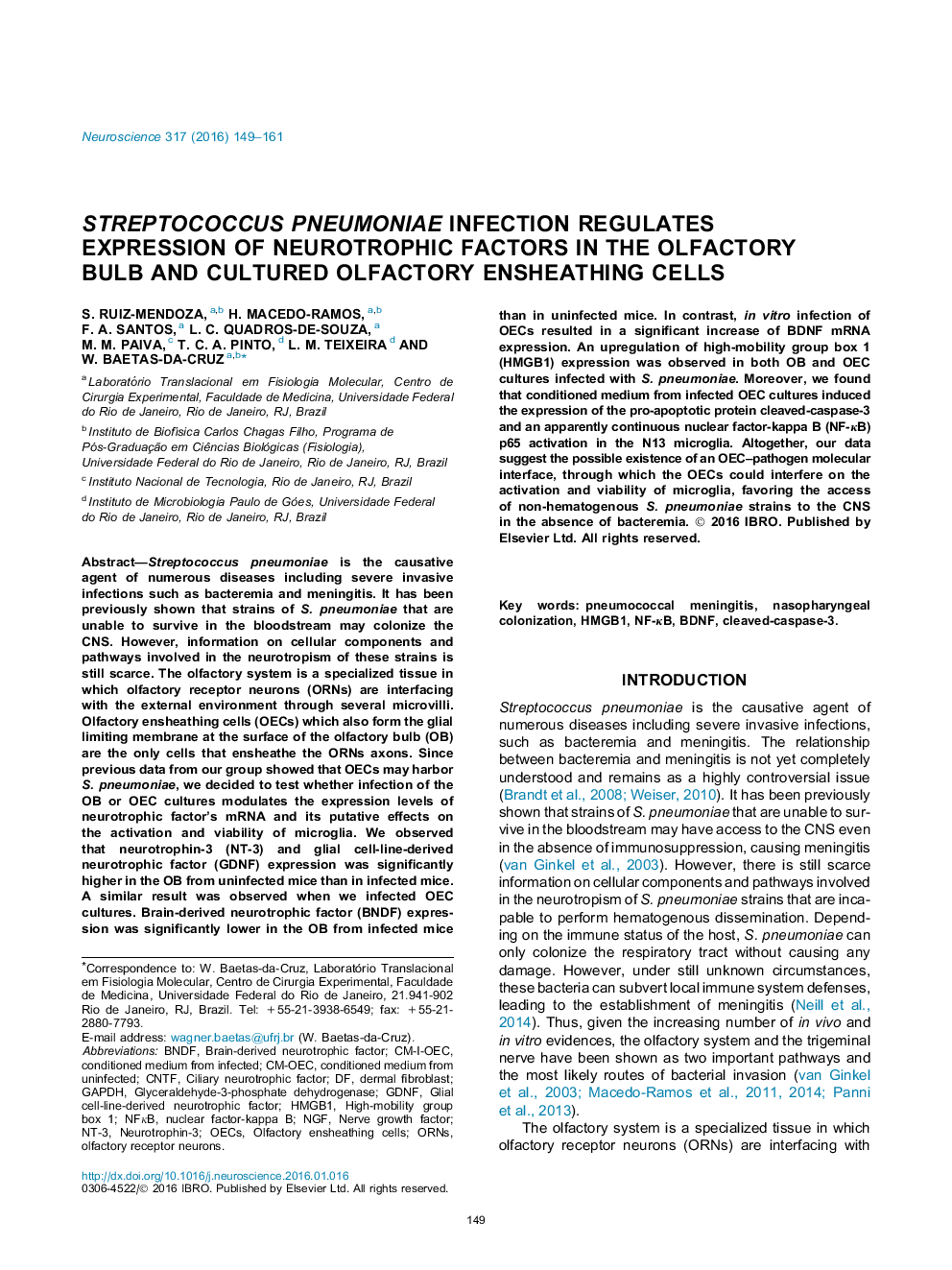| کد مقاله | کد نشریه | سال انتشار | مقاله انگلیسی | نسخه تمام متن |
|---|---|---|---|---|
| 4337395 | 1614759 | 2016 | 13 صفحه PDF | دانلود رایگان |
• Neurotrophic factors’ expression was significantly lower in the olfactory bulb from infected mice.
• In vitro infection of OECs resulted in a significant increase of BDNF mRNA expression.
• HMGB1 expression was increased in both olfactory bulb and OEC cultures infected with S. pneumoniae.
• Conditioned medium of OEC/S. pneumoniae induced cleaved caspase-3 expression and NF-κB activation in N13 microglia.
Streptococcus pneumoniae is the causative agent of numerous diseases including severe invasive infections such as bacteremia and meningitis. It has been previously shown that strains of S. pneumoniae that are unable to survive in the bloodstream may colonize the CNS. However, information on cellular components and pathways involved in the neurotropism of these strains is still scarce. The olfactory system is a specialized tissue in which olfactory receptor neurons (ORNs) are interfacing with the external environment through several microvilli. Olfactory ensheathing cells (OECs) which also form the glial limiting membrane at the surface of the olfactory bulb (OB) are the only cells that ensheathe the ORNs axons. Since previous data from our group showed that OECs may harbor S. pneumoniae, we decided to test whether infection of the OB or OEC cultures modulates the expression levels of neurotrophic factor’s mRNA and its putative effects on the activation and viability of microglia. We observed that neurotrophin-3 (NT-3) and glial cell-line-derived neurotrophic factor (GDNF) expression was significantly higher in the OB from uninfected mice than in infected mice. A similar result was observed when we infected OEC cultures. Brain-derived neurotrophic factor (BNDF) expression was significantly lower in the OB from infected mice than in uninfected mice. In contrast, in vitro infection of OECs resulted in a significant increase of BDNF mRNA expression. An upregulation of high-mobility group box 1 (HMGB1) expression was observed in both OB and OEC cultures infected with S. pneumoniae. Moreover, we found that conditioned medium from infected OEC cultures induced the expression of the pro-apoptotic protein cleaved-caspase-3 and an apparently continuous nuclear factor-kappa B (NF-κB) p65 activation in the N13 microglia. Altogether, our data suggest the possible existence of an OEC–pathogen molecular interface, through which the OECs could interfere on the activation and viability of microglia, favoring the access of non-hematogenous S. pneumoniae strains to the CNS in the absence of bacteremia.
Journal: Neuroscience - Volume 317, 11 March 2016, Pages 149–161
